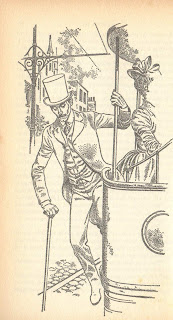A Picture of KM. BBC. Episode 1
A Picture of KM. BBC. Episode 2
A Picture of KM. BBC. Episode 3
A Picture of KM. BBC. Episode 4
A Picture of KM. BBC. Episode 5
A Picture of KM. BBC. Episode 6
A Portrait of Katherine Mansfield
A BRIEF SUMMARY OF HER LIFE
Her father, Harold Beauchamp, was an Australian who had made his living with business related to gold mines. Then he immigrated to New Zealand and, little by little, achieved a very important position in society and became a magnate of finances, and even he was made a knight for his services to the British Empire.
Katherine had two older sisters and a younger sister
and a younger brother. Their parents give them some education and encouraged
them to play the piano, to learn how to paint, to read, etc.
You have to remember that New Zealand was the first
country in the world where women had the right to vote, in 1893.
At 14, Katherine Mansfield fell in love with a
neighbour, Arnold Trowell, a cellist, and from that moment she decided she
wanted to be a musician.
When she was 15, her father decided to send his three
older girls to London to study at Queen’s College, a very liberal school in
Bloomsbury, a neighbourhood in London. Bloomsbury was also the name of a group
of intellectuals with a great influence in arts and science.
There she starts her long-life friendship with Ida
Baker. It was a singular relationship because Ida (whom Katherine Mansfield
called her “wife”) was (perhaps) her lover, her loyal friend but also her
slave. Ida Baker wrote a book about Katherine Mansfield with the title Katherine
Mansfield, The Memoirs of L.M., being L.M. Lesley Moore, a male name that Katherine
Mansfield gave her.
She was at Queen’s College for 3 years; then she had
to go back to New Zealand, but she couldn’t stand the provincial life of her
native country and, in the end, she convinced her father to allow her to travel
again to the UK and stay there with an annual allowance. She was 20.
She accommodated in a student hostel with a lot of
freedom.
There she got in contact again with Arnold Trowell,
but she fell in love with his brother Garnet, a violinist. She got pregnant,
but we don’t know if he knew it. And then, all of a sudden, she got married to
George Bowden, a singing teacher 10 years her senior. Nobody knows for sure the
reasons of this marriage. The wedding was a surrealistic affair: she wore
black, Ida was their only witness, and she left her husband the wedding night
without consuming the marriage. George didn’t want to give her the divorce for
six years.
She left the idea of being a musician and bet on
being a writer.
Her mother knew about all the affair and travelled to
London to take her daughter to a small spa in Bavaria. But they quarrelled, and
she disinherited her forever, left her there and went back to New Zealand.
In this spa, Katherine Mansfield had a miscarriage. Her
stay in Germany was the ground of her book In a German Pension.
She became briefly involved with a Polish translator,
Floryan Sobieniowsky, who infected her with gonorrhoea; that was possibly the
cause of her bad health during all her life, her rheumatism, her infertility,
surely of her tuberculosis and her premature death. But, thanks to Floryan, she
knew Chekhov. A story of hers, The-Child-Who-Was-Tired, a version of a
Chekov’s short story (Sleep), almost a plagiarism, was published in 1910
in the magazine The New Age and marks the introduction of this Russian
writer to the English critics and readers.
She went back to London, and since then, she moved
house restlessly, mostly due to shortness of money.
She published In a German Pension, and she met
John Murry, an undergraduate from Oxford, editor of Rhythm, who was
going to be her partner, lover and husband in a very troublesome relationship.
Their relationship began when she accommodated him in her flat and asked him to
make her his mistress. Katherine then worked in his magazine writing book
reviews.
Murry and Katherine met D. H. Lawrence and his lover
Frieda, and went to live together in Cornwall in a kind of commune; but the
society only lasted six months. The characters Gerald and Gudrun in D. H.
Lawrence’s novel Women in Love are the portraits of Murry and Katherine.
In 1914 the Great War started, and in 1915 her brother
Leslie, her favourite in her family, died in an army training.
She met people from the Bloomsbury Group. Leonard
Bloom published her Prelude, and she had affairs with members of the
group. Her relationship with Virginia Woolf was of admiration and jealousy.
At 29, she was diagnosed with tuberculosis, but she
didn’t want to go to a sanatorium. She went to live in the South of France,
where a lot of English people with the same illness tried to recover their
health.
These last years of her life were her most productive
in literature. She published Bliss in 1918 and The Garden Party and
Other Stories in 1922.
From the South of France she went to Paris looking for
a cure with a famous bacteriologist, and then to Fontainebleau, where a Russian
exile (George Gurdjieff) ruled an alternative community that tried to live
nearer the nature.
The Dove’s Nest, Something Childish but Very Natural, her letters and diaries were published posthumously by her husband John Murry.

